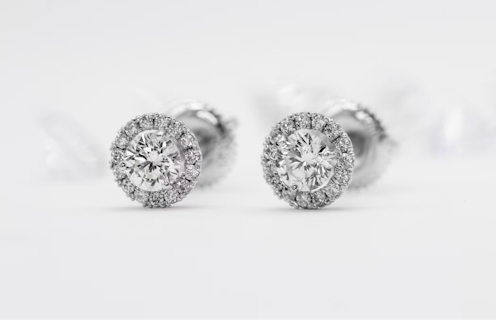Style
Why Lab-Grown Jewelry Is Gaining Popularity
They’re affordable, high-quality, and ethical.
The jewelry industry has experienced a significant revolution over recent years. Rare mineral stones like diamonds command a hefty price due to supply and availability. However, you can create diamonds using sophisticated technology in a laboratory.
This approach has witnessed a massive following influenced by customer awareness of the environmental and social impacts of conventional mining practices. Here are some important aspects fueling the trend.
Affordability
Easy access to luxury jewelry items is no longer reserved for the super-rich, thanks to the rise of synthetic lab-grown diamonds. Today, sustainable jewelry is more accessible to more people and offers bigger pieces with better quality. Most importantly, lab-made jewelry costs just a fraction of what you’d pay for a mined diamond.
By leveraging modern technology, innovative brands can produce stunning jewelry, allowing customers to buy bigger and better pieces. This invention democratizes luxury jewelry, making it more accessible without jeopardizing quality. Typically, lab-grown gemstones promise a level of availability that conventional diamonds can’t match. Natural mineral stones are finite and sparsely distributed, and high-quality natural gemstones can be expensive and difficult to find.
On the other hand, lab-grown gemstones are manufactured on demand and with precise quality specifications. Consumers can assess a vast selection of gemstones in terms of size, shape, and design to ensure optimum satisfaction.
Outstanding Quality
It’s tempting to believe that synthetic diamonds are of inferior quality when compared to natural diamonds. On the contrary, the only difference between the two types is their origins. Typically, lab-grown jewels are developed under specific conditions that facilitate strict control of growth and features. This means you can specify the color and minimize flaws to ensure quality.
Longevity is a vital consideration when buying gemstone jewels. Most importantly, lab-grown and natural gemstones are equally durable. And this is because synthetic versions are made from the same materials and exhibit the same characteristics.
Nevertheless, it’s vital to ensure you’re buying your lab-grown jewelry from reputable brands with a reliable history of diamond cutting. The quality standards between manufacturers may vary due to differences in production processes. Ultimately, the quality in manufacturing is more important than the diamond’s origin.
Ethical Considerations
In the age of high environmental awareness, lab-grown jewels have significant popularity since the production process aligns with environmental and sustainability goals. The environmental and social concerns persuade modern consumers to look for better alternatives.
Traditional diamonds are associated with massive resource consumption in the mining process, which drives the cost through the roof. The process is also linked to environmental damage, worker exploitation, and displacement of communities.
On the other hand, lab-grown diamonds have a low carbon emission and minimal environmental impact. This is because the production process doesn’t involve mining. Besides, many lab-grown jewel companies use renewable energy options like wind and solar. As more consumers prioritize and support sustainable and responsible practices, synthetic gemstones have become a popular ethical option.
Endnote
Lab-grown gemstones have become increasingly popular amidst the growing social and environmental awareness. Since the quality is at par with natural stones, lab-grown gemstones demonstrate responsible luxury, sustainability, and technological triumph. Lastly, lab-grown gemstones provide high affordability, conflict-free assurance, and quality consistency.
BDG Media newsroom and editorial staff were not involved in the creation of this content.
